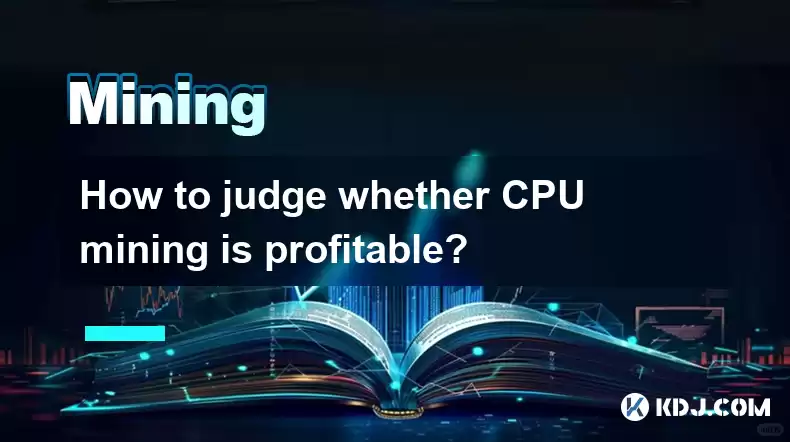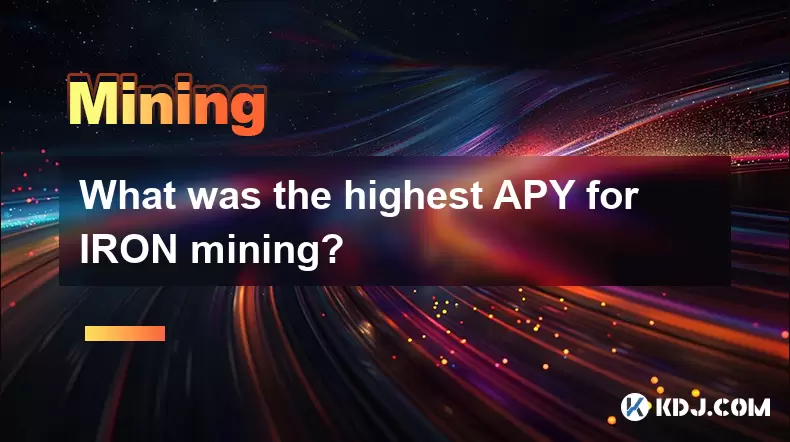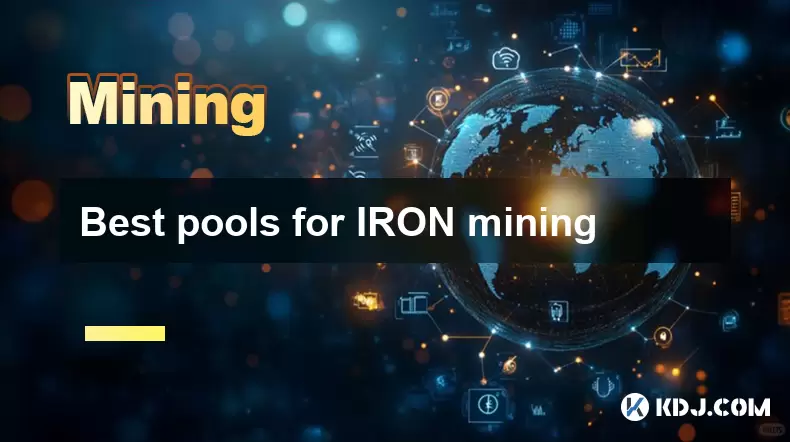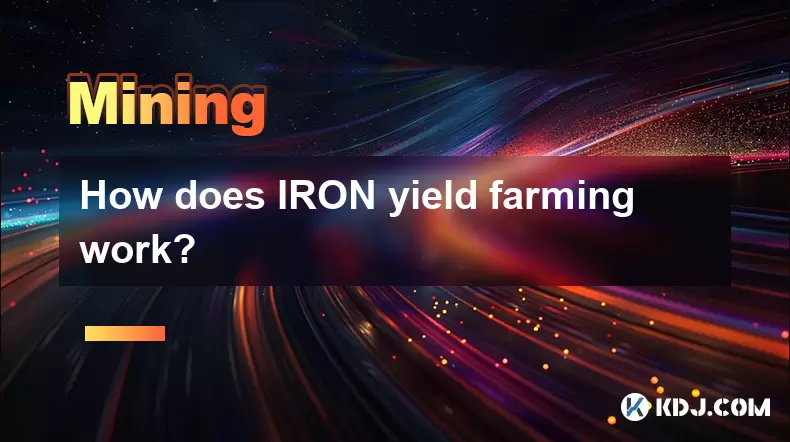-
 Bitcoin
Bitcoin $117300
-1.11% -
 Ethereum
Ethereum $3722
0.05% -
 XRP
XRP $3.144
-2.04% -
 Tether USDt
Tether USDt $1.000
-0.06% -
 BNB
BNB $780.0
0.13% -
 Solana
Solana $184.9
-1.51% -
 USDC
USDC $0.9998
-0.03% -
 Dogecoin
Dogecoin $0.2349
-0.94% -
 TRON
TRON $0.3145
0.01% -
 Cardano
Cardano $0.8143
-0.40% -
 Hyperliquid
Hyperliquid $43.34
1.43% -
 Sui
Sui $3.966
4.43% -
 Stellar
Stellar $0.4301
-0.30% -
 Chainlink
Chainlink $18.24
-0.02% -
 Hedera
Hedera $0.2604
7.17% -
 Bitcoin Cash
Bitcoin Cash $549.4
6.63% -
 Avalanche
Avalanche $23.98
-0.25% -
 Litecoin
Litecoin $113.3
-0.18% -
 UNUS SED LEO
UNUS SED LEO $8.972
-0.07% -
 Shiba Inu
Shiba Inu $0.00001397
1.28% -
 Toncoin
Toncoin $3.169
0.33% -
 Ethena USDe
Ethena USDe $1.001
-0.05% -
 Polkadot
Polkadot $4.084
0.64% -
 Uniswap
Uniswap $10.37
0.32% -
 Monero
Monero $320.5
-1.82% -
 Dai
Dai $0.9999
-0.02% -
 Bitget Token
Bitget Token $4.531
-2.43% -
 Pepe
Pepe $0.00001251
-1.42% -
 Aave
Aave $293.5
0.19% -
 Cronos
Cronos $0.1301
2.67%
Wie kann man beurteilen, ob der CPU -Bergbau profitabel ist?
Die Rentabilität der CPU -Mining hängt von Hardware, Stromkosten, Schwierigkeitsgrad der Krypto, Softwaregebühren und alternativen Investitionsoptionen ab. Eine gründliche Analyse ist vor dem Start von entscheidender Bedeutung.
Mar 14, 2025 at 06:40 pm

Schlüsselpunkte:
- Hardwarekosten: Erste Investitionen in eine geeignete CPU, ein Motherboard, das Netzteil und ein Kühlsystem beeinflussen die Rentabilität erheblich. Die Abschreibung muss berücksichtigt werden.
- Stromkosten: Der Energieverbrauch ist ein wesentlicher Aufwand. Berechnen Sie Ihre Kilowatt-Stunde (KWH) und die Leistungsablosung der CPU, um die Stromkosten pro Stunde Bergbau zu bestimmen.
- Mining -Schwierigkeit: Die Schwierigkeit, Kryptowährungen in Bergbau zu ermöglichen, ändert sich ständig und wirkt sich auf die für einen erfolgreichen Bergbau erhaltenen Belohnungen aus. Höhere Schwierigkeit bedeutet weniger Gewinn.
- Kryptowährungspreis: Der Preis für die Kryptowährung, die Sie abbaut, schwankten und beeinflussen direkt Ihre potenziellen Einnahmen. Preisabfälle können schnell Gewinne löschen.
- Bergbausoftware und Gebühren: Bergbausoftware erfordert häufig Gebühren oder Abonnements. Transaktionsgebühren für die Blockchain reduzieren auch Ihren Nettogewinn.
- Alternative Investitionsmöglichkeiten: Vergleichen Sie den potenziellen ROI des CPU -Bergbaus mit anderen Anlagemöglichkeiten im Krypto -Bereich.
Wie kann man beurteilen, ob der CPU -Bergbau profitabel ist?
Der CPU -Mining, einst eine beliebte Methode zum Erwerb von Kryptowährungen, ist in den letzten Jahren aufgrund des Aufstiegs von spezialisierten Hardware wie ASICS und GPUs deutlich weniger rentabel geworden. Es kann jedoch immer noch eine praktikable Option für bestimmte Nischenkryptowährungen oder als Lernerfahrung sein. Lassen Sie uns die Schlüsselfaktoren untersuchen, um festzustellen, ob der CPU -Mining für Sie rentabel ist.
1. Bewertung der Hardwarekosten:
Vor dem Start müssen Sie die Kosten Ihrer Hardware bestimmen. Dies schließt die CPU selbst, ein kompatibles Motherboard, eine ausreichende Stromversorgung (berücksichtigen Sie die Leistung der CPU) und eine angemessene Kühlung, um eine Überhitzung zu verhindern. Vergessen Sie nicht, die Kosten für zusätzliche Komponenten zu berücksichtigen, die Sie möglicherweise benötigen, z. B. RAM. Denken Sie daran, dass Hardware im Laufe der Zeit abgeschrieben wird. Fügen Sie dies in Ihre Kostenberechnungen ein.
2. Berechnung der Stromkosten:
Strom ist eine erhebliche laufende Kosten. Finden Sie Ihre örtliche Kilowatt-Stunde (KWH) -Trate aus Ihrer Stromrechnung. Bestimmen Sie dann den Stromverbrauch Ihrer CPU (normalerweise in ihren Spezifikationen). Multiplizieren Sie die Stromauslosung der CPU (in Watts) mit der Anzahl der Stunden, die Sie pro Tag und dann mit Ihrer KWH -Rate abbauen möchten. Dies gibt Ihnen die täglichen Stromkosten für den Bergbau.
3.. Mining -Schwierigkeit verstehen:
Mining -Schwierigkeit bezieht sich auf die rechnerische Komplexität der Lösung der kryptografischen Rätsel, die erforderlich sind, um einen Transaktionsblock abzubauen. Je höher die Schwierigkeit, desto mehr Rechenleistung ist erforderlich und desto niedriger Ihre Chancen, einen Block erfolgreich abzubauen und die Belohnung zu erhalten. Die Schwierigkeit wird je nach Hash -Rate des Netzwerks automatisch angepasst. Überprüfen Sie die aktuelle Schwierigkeit für die spezifische Kryptowährung, die Sie abschließen möchten.
4. Analyse der Volatilität der Kryptowährungspreis:
Der Preis für die Kryptowährung, die Sie abbaut, ist ein entscheidender Faktor. Selbst wenn Ihr Bergbauunternehmen Münzen erzeugt, können Ihr potenzieller Gewinn verschwinden, wenn der Preis erheblich sinkt. Überwachen Sie den Preis der gewählten Kryptowährung sorgfältig. Betrachten Sie Preisvorhersagen, aber denken Sie daran, diese sind spekulativ.
5. Bilanzierung von Bergbausoftware und Gebühren:
Sie benötigen Bergbau -Software, um Ihre CPU mit dem Kryptowährungsnetzwerk zu verbinden. Einige Software sind kostenlos, während andere Gebühren oder Abonnements berechnen. Darüber hinaus werden Transaktionsgebühren für das Hinzufügen Ihrer abgebauten Blöcke zur Blockchain belastet. Diese Gebühren verringern Ihr Nettoeinkommen. Faktor sie daher in Ihre Berechnungen.
6. Vergleich mit alternativen Investitionen:
Bevor Sie sich für den CPU -Bergbau verpflichten, sollten Sie alternative Investitionsmöglichkeiten innerhalb des Kryptowährungsmarktes in Betracht ziehen. Dies könnte das Einstellen, Kreditvergeben oder Investieren in andere Kryptowährungen umfassen. Vergleichen Sie den potenziellen Return on Investment (ROI) des CPU -Bergbaus mit diesen Alternativen. Ein gründlicher Vergleich ist entscheidend für eine fundierte Entscheidung.
7. Auswahl der richtigen Kryptowährung:
Nicht alle Kryptowährungen sind gleichermaßen profitabel, um mit CPUs abzubauen. Einige Kryptowährungen sind so konzipiert, dass sie mit spezialisierter Hardware abgebaut werden, wodurch der CPU -Mining ineffizient ist. Forschungskryptowährungen, die noch relativ relativ CPU-minbar sind, und ihre aktuelle Rentabilität anhand der oben diskutierten Faktoren analysieren. Betrachten Sie die Blockbelohnung und die Hash -Rate des Netzwerks.
Häufige Fragen und Antworten:
F: Ist der CPU -Bergbau im Jahr 2024 immer noch rentabel?
A: Im Allgemeinen nein. Die Rentabilität des CPU -Bergbaus ist aufgrund der Dominanz von ASICS und GPUs für große Kryptowährungen wie Bitcoin äußerst niedrig. Einige weniger beliebte Altcoins bieten jedoch möglicherweise eine geringe Wahrscheinlichkeit der Rentabilität, abhängig von Faktoren wie Schwierigkeiten, Stromkosten und dem Preis der Kryptowährung.
F: Was sind die besten CPUs für den Bergbau?
A: Während jede CPU technisch abbauen kann, sind die effizientesten CPUs für den Bergbau diejenigen mit hohen Taktgeschwindigkeiten und vielen Kernen. Selbst der beste CPUs wird jedoch für die meisten Kryptowährungen von ASICS und GPUs erheblich übertroffen. Die Konzentration auf die Energieeffizienz ist auch aufgrund von Stromkosten von entscheidender Bedeutung.
F: Wie kann ich meinen potenziellen Gewinn aus dem CPU -Bergbau berechnen?
A: Sie müssen die Kosten der Hardware (einschließlich Abschreibungen), den Stromverbrauch, die Bergbausoftwaregebühren, die Transaktionsgebühren, den Preis der Kryptowährung und die Schwierigkeit des Bergbaus berücksichtigen. Verwenden Sie Online -Bergbau -Rentabilitätsrechner, aber denken Sie daran, dass dies Schätzungen sind und möglicherweise nicht ganz genau sind.
F: Gibt es mit dem CPU -Bergbau Risiken verbunden?
A: Ja. Zu den Hauptrisiken gehören schwankende Kryptowährungspreise, Erhöhung der Schwierigkeitsgrad des Bergbaums, Hardwareversagen und hohe Stromkosten. Darüber hinaus kann der potenzielle Gewinn minimal oder sogar negativ sein, was es für die meisten Benutzer im Jahr 2024 zu einer hohen Risiko-Aktivität mit niedriger Belohnung macht.
Haftungsausschluss:info@kdj.com
Die bereitgestellten Informationen stellen keine Handelsberatung dar. kdj.com übernimmt keine Verantwortung für Investitionen, die auf der Grundlage der in diesem Artikel bereitgestellten Informationen getätigt werden. Kryptowährungen sind sehr volatil und es wird dringend empfohlen, nach gründlicher Recherche mit Vorsicht zu investieren!
Wenn Sie glauben, dass der auf dieser Website verwendete Inhalt Ihr Urheberrecht verletzt, kontaktieren Sie uns bitte umgehend (info@kdj.com) und wir werden ihn umgehend löschen.
-
 RYU Jetzt handeln
RYU Jetzt handeln$0.0...08668
122.04%
-
 RSC Jetzt handeln
RSC Jetzt handeln$0.5386
33.48%
-
 HYPER Jetzt handeln
HYPER Jetzt handeln$0.5374
23.81%
-
 KEEP Jetzt handeln
KEEP Jetzt handeln$0.1015
21.97%
-
 DIA Jetzt handeln
DIA Jetzt handeln$0.9941
20.58%
-
 SPK Jetzt handeln
SPK Jetzt handeln$0.1280
18.02%
- Token6900: Die nächste große Memmünze? Vorverkauf heizt sich auf!
- 2025-07-26 05:30:35
- Ondo Breakout Assessment: Wale, Brieftaschen und was kommt als nächstes?
- 2025-07-26 05:30:35
- Kaspas stärkster Monat enthüllte: Neue Datenschocks Kas Traders!
- 2025-07-26 04:30:12
- Grenzüberschreitende Zahlungen Revolution: Stablecoins und Zahlungsanbieter führen die Anklage an
- 2025-07-26 04:50:12
- Kryptoverluste: Von Zirp bis Null - wie ich eine Million Dollar verloren habe (und was Sie lernen können)
- 2025-07-26 04:30:12
- Strategie, Bitcoin und Vorzugsbestand: Eine New Yorker Minute über Saylors mutige Wette
- 2025-07-26 04:50:12
Verwandtes Wissen

Was war die höchste APY für den Eisenabbau?
Jul 23,2025 at 05:14am
Verständnis des Eisen -Tokens und seines Bergbaubecheitungsmechanismus Das Eisen -Token ist ein Stablecoin, das im Iron Finance -Ökosystem arbeitet, h...

Was ist impermanenten Verlust in Eisenpools?
Jul 23,2025 at 09:00am
Verständnis impermanenten Verlust im Kontext von Eisenpools Impermanenter Verlust ist ein Phänomen, das die Liquiditätsanbieter auf dezentralen Finanz...

Wie kann man Belohnungen aus dem Eisenabbau beanspruchen?
Jul 23,2025 at 02:21pm
Verständnis von Eisenabbau- und Belohnungsmechanismen Die Eisenfinanzierung wurde als dezentrales Finanzprotokoll (DEFI) im Polygon- und Binance-Smart...

Wie beginne ich mit dem Bergbau auf Polygon?
Jul 23,2025 at 08:00pm
Eisen und seine Rolle auf Polygon verstehen Eisen ist ein dezentrales, algorithmisches Stablecoin, das für die Aufrechterhaltung eines 1: 1 -Stifts mi...

Beste Pools für den Eisenabbau
Jul 26,2025 at 03:56am
Verständnis des Eisenabbaus und dessen einzigartiger Mechanismus Iron (Eisenfinanzierung) war ein Dezentral-Finance-Projekt (DEFI), das darauf abzielt...

Wie funktioniert die Eisenbaumbau?
Jul 23,2025 at 10:14pm
Verständnis der Eisenertragslandwirtschaft und dessen Kernmechanismus Die Banal für die Eisenrendite ist eine dezentrale Finanzierungsstrategie (DEFI)...

Was war die höchste APY für den Eisenabbau?
Jul 23,2025 at 05:14am
Verständnis des Eisen -Tokens und seines Bergbaubecheitungsmechanismus Das Eisen -Token ist ein Stablecoin, das im Iron Finance -Ökosystem arbeitet, h...

Was ist impermanenten Verlust in Eisenpools?
Jul 23,2025 at 09:00am
Verständnis impermanenten Verlust im Kontext von Eisenpools Impermanenter Verlust ist ein Phänomen, das die Liquiditätsanbieter auf dezentralen Finanz...

Wie kann man Belohnungen aus dem Eisenabbau beanspruchen?
Jul 23,2025 at 02:21pm
Verständnis von Eisenabbau- und Belohnungsmechanismen Die Eisenfinanzierung wurde als dezentrales Finanzprotokoll (DEFI) im Polygon- und Binance-Smart...

Wie beginne ich mit dem Bergbau auf Polygon?
Jul 23,2025 at 08:00pm
Eisen und seine Rolle auf Polygon verstehen Eisen ist ein dezentrales, algorithmisches Stablecoin, das für die Aufrechterhaltung eines 1: 1 -Stifts mi...

Beste Pools für den Eisenabbau
Jul 26,2025 at 03:56am
Verständnis des Eisenabbaus und dessen einzigartiger Mechanismus Iron (Eisenfinanzierung) war ein Dezentral-Finance-Projekt (DEFI), das darauf abzielt...

Wie funktioniert die Eisenbaumbau?
Jul 23,2025 at 10:14pm
Verständnis der Eisenertragslandwirtschaft und dessen Kernmechanismus Die Banal für die Eisenrendite ist eine dezentrale Finanzierungsstrategie (DEFI)...
Alle Artikel ansehen

























































































